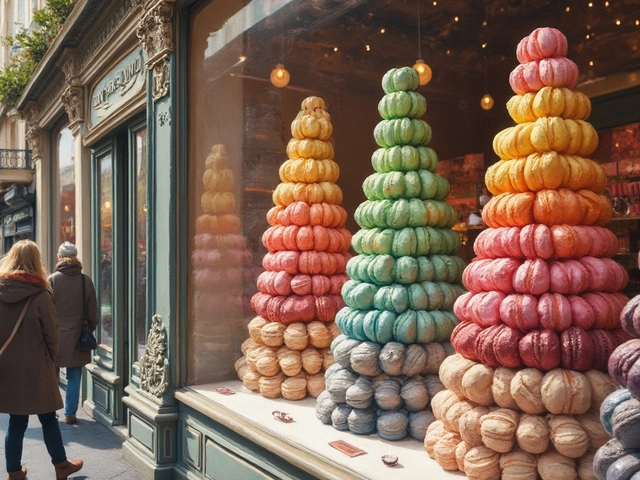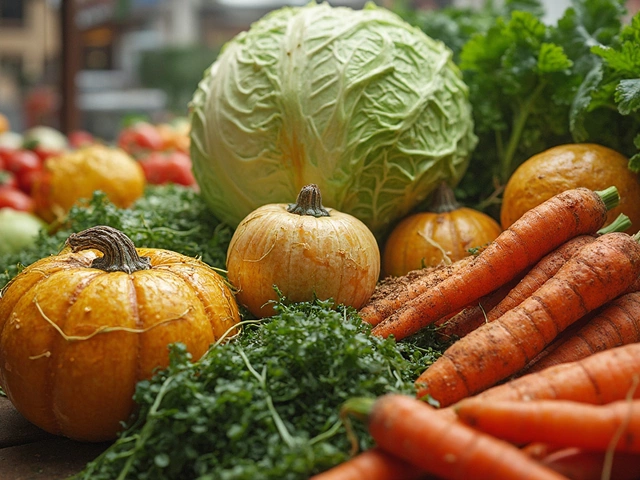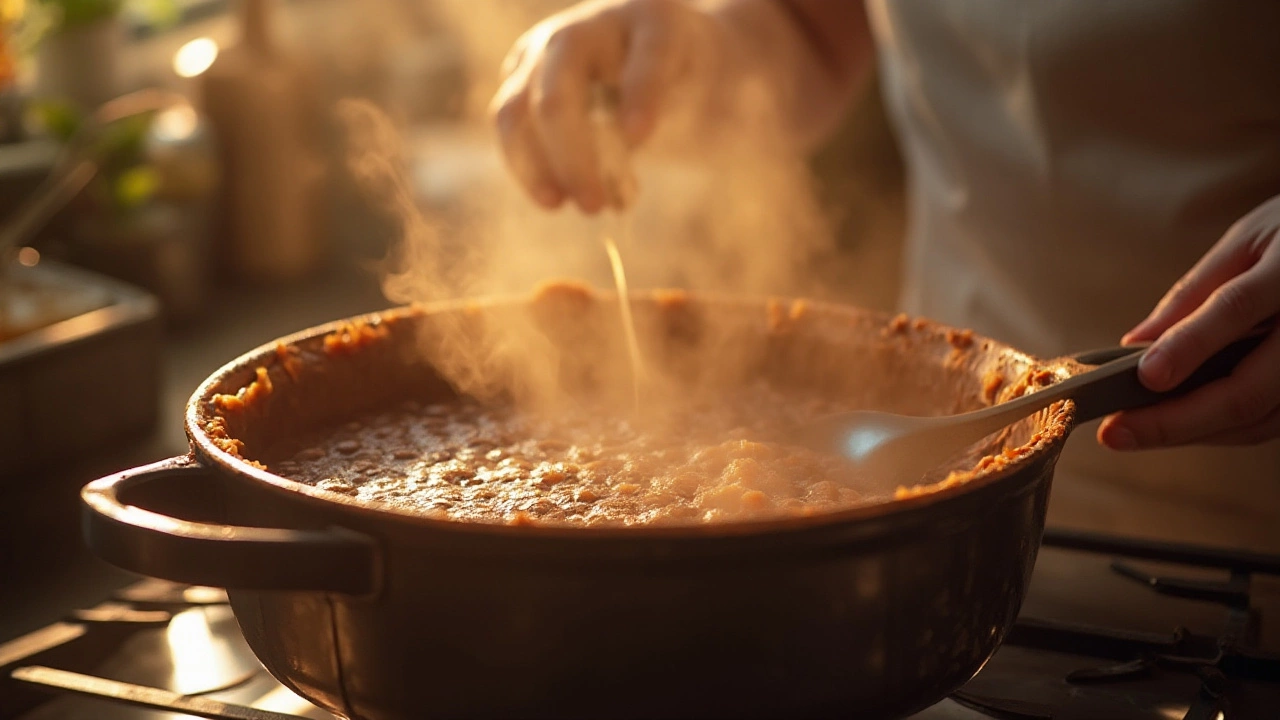
Ah, fudge—a delightful treat that seems to melt in your mouth with velvety smoothness when prepared perfectly. Nonetheless, the magic of fudge making can turn into a frustrating kitchen challenge if stirred at the wrong moment. Stirring your fudge too soon is one of the most common pitfalls and can drastically alter its texture, leaving you with a grainy, disappointing dessert.
To understand the significance of timing in fudge making, it's crucial to delve into the science of sugar crystals and their behavior during the cooking process. Missteps might seem minor, but they can lead to a crystallized concoction rather than that luscious, creamy delight we all crave. With the right knowledge and a bit of patience, however, it's possible to salvage even prematurely stirred fudge and learn techniques that yield perfect results every time.
- The Science Behind Fudge Making
- Common Mistakes in Fudge Preparation
- The Importance of Timing Your Stir
- Signs Your Fudge is Ready for Stirring
- Rescuing a Stirred-Too-Early Fudge
- Expert Tips for Perfect Fudge
The Science Behind Fudge Making
Fudge is one of those classic confections where art and science blend harmoniously. Ensuring a luscious, creamy texture depends on a delicate balance of heat, sugar, and timing. At the heart of understanding fudge making is the behavior of sugar—an ingredient that can make or break your sweet creation. When sugar is dissolved in liquid and heated, it undergoes a fascinating transformation. As the mixture simmers and begins to cool, the *sugar crystals* start to form a coherent blend, ideally too small to be noticed by the tongue, resulting in that desired silky smoothness.
It’s crucial to remember that sugar, when it’s stirred too soon, tends to crystallize prematurely. This scenario is akin to an orchestra starting its performance before the conductor gives the cue, resulting in a cacophonous outcome rather than a euphonious experience. The aim during fudge preparation is to allow the sugar to remain suspended in a supersaturated solution long enough that it doesn't eagerly nucleate into large, crunchy crystals as it cools down.
Renowned pastry chef Stella Parks once mentioned, "Controlling sugar crystallization is the essence of candy making, especially in classic fudge recipes." Her expert insights help illuminate why precision in timing and methods is absolutely paramount.
Beyond sugar, the role of temperature in fudge making cannot be understated. Typically, fudge should reach a 'soft ball' stage, which is around 235-240 degrees Fahrenheit. This is where the mixture forms a soft ball when dropped into cold water but flattens once removed, and it is a pivotal check for doneness. At this temperature, sufficient water has evaporated, limiting crystal formation. This is why using a trusty candy thermometer is more than advisable; it’s essential. The temperature not only guides the candy's texture but also ensures stability across its chocolate or vanilla base. Emphasized knowledge of candy making intricacies leads to consistently impressive homemade fudge.
For those who love diving into data, here’s an illustrative look at the relationship between temperature and sugar concentration.
| Stage | Water Content | Temperature (Fahrenheit) |
|---|---|---|
| Soft Ball | ~15% | 235-240 |
| Firm Ball | ~10% | 245-250 |
| Hard Ball | ~5% | 255-265 |
Grasping the chemistry of homemade fudge involves mindfully balancing these elements: temperature precision, controlled stirring, and patience in cooling. Each plays a distinctive role in ensuring that as the fudge sets, it does so without interference from overzealous sugar crystallization processes. For anyone venturing into the world of fudge, appreciating these scientific nuances enriches the journey and rewards your palate with a confectionary marvel.
Common Mistakes in Fudge Preparation
Crafting the perfect fudge can be a rewarding experience, yet it's surprisingly easy to fall into some common fudge recipes blunders that could compromise the end product. Stirring is just one of the potential pitfalls. The initial misstep often begins with measuring ingredients imprecisely. Fudge is precise in its demands: a teaspoon more or less of sugar or butter can alter the sweetness or texture significantly. Making fudge requires a delicate balance between its components, and a slight deviation can result in a confection that sets too hard or refuses to harden at all.
An oft-overlooked factor is temperature control. Fudge making is essentially about the science of sugar. It's vital for the mixture to reach the 'soft ball' stage. This is around 235 to 240 degrees Fahrenheit, and a candy thermometer is essential for accuracy. Eyeballing it isn't wise, since imprecision here can lead to fudge that’s too chewy or remains stubbornly sticky. This delicate phase is where many less experienced confectioners quit in frustration. It's important to resist the urge to increase heat for a quicker result. High heat might speed things along, but it tends to cause the sugar molecules to bind chaotically, affecting the texture and flavor.
Harriet Barlow from the Brighton Confectionery Workshop once noted, "Patience is key when making fudge. Each step requires attention and the right temperature is crucial to avoid a grainy finish."
Another typical faux pas includes improper cooling. Many are too eager to cool their fudge. Still in its gooey state, the temptation to pop it straight into the fridge can be strong, but letting it cool gradually at room temperature is crucial. This allows the carefully orchestrated sugar molecules to align correctly, lending to a smoother bite. Hastening this process often results in an unpleasantly grainy texture that no amount of stirring can fix later.
While stirring too early is the headline mistake, the excessive stirring post-cooling is another well-trod error. Once your mixture cools to around 110 degrees Fahrenheit, it’s time to stir just enough to achieve that creamy consistency. However, overzealous stirring can cause the sugar crystals to solidify too quickly, resulting in a mass that’s more like a crystallized brick than fudge. These errors are perfectly normal during the conquest of fudge, but awareness and attentiveness are the first steps to avoiding them.
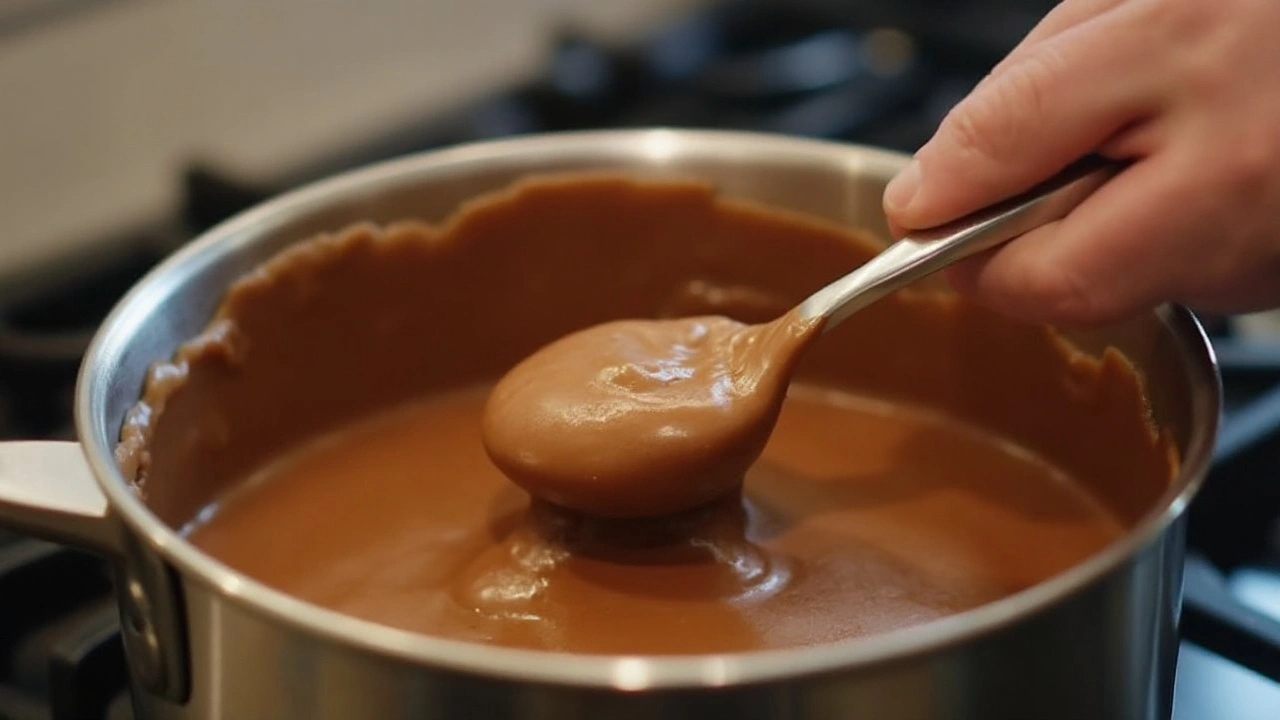
The Importance of Timing Your Stir
When it comes to crafting the perfect homemade fudge, timing is everything, especially when you're considering when to stir. Stirring at the wrong moment can lead to an unfortunate crystallized texture, which is far from the smooth, dreamy fudge you’re aiming for. The delicacy of this process lies in the way sugar behaves—the primary ingredient that you need to control during fudge making. As you heat your mixture, sugar dissolves in the liquid, and as it gradually cools, proper stirring at the right moment ensures the development of small, even sugar crystals. This balance is what gives fudge its characteristic creamy texture. But if you stir too early, those crystals start to form larger clusters, leading to a grainy mess.
Understanding the chemistry here is key. During candy making, sugar solutions have two significant stages: the soft-ball stage and firm-ball stage, determined by the temperature of the solution. For fudge, you generally want to stop heating just after it reaches the soft-ball stage, around 235 to 240 degrees Fahrenheit (or 113 to 115 degrees Celsius). It's in this critical window that timing your stir becomes crucial. Stir too soon before the solution cools slightly, and you disrupt the formation of proper sugar crystals. Allow it to cool to about 110 degrees Fahrenheit (43 degrees Celsius) before stirring to avoid large crystals from setting prematurely. A candy thermometer is an indispensable tool here. It helps gauge precisely when to begin stirring after the mixture has had a chance to cool to the optimal temperature.
Incidentally, a quote from famed pastry chef and cookbook author David Lebovitz resonates well:
"Precision is the key to smooth fudge. A fraction of error can transform candy from a dream to a disaster."This emphasizes the challenge: being both patient and meticulous. Some confectioners even suggest using a wet cloth around the pot's rim as a hack to catch rogue sugar crystals that may kick-start premature crystallization. This practice can prevent unwanted graininess, ensuring your soft fudge outshines expectations. There are purists who argue that using precise measuring tools and understanding these stages of sugar boiling are just as integral to candy making as ingredients themselves.
To further enhance your fudge-making success, you may wish to employ a methodical approach. It could be helpful to create a list of tasks or steps in your head, aligning each action with its precise moment. Equip yourself with all necessary tools and ingredients at arm's reach, reducing hurried movements. Gain peace of mind by preparing your countertop work area with clear space, cutting distracting elements out of sight. Engaging fully with the process, even treating it with an almost meditative patience, aligns your actions with traditions passed through generations of fudge makers. Attention to these minor details might not only enrich your technique but add soul to your craft's final result.
Signs Your Fudge is Ready for Stirring
Knowing exactly when to stir your fudge is pivotal in achieving that silky smooth texture we're all after. Stir too early, and you'll end up with a sandy graininess that just won't do. But how can you tell your fudge is ready for stirring? It all begins with understanding the transformative phase of sugar during the cooking process. As the sugar heats, it dissolves completely, letting the mixture come together seamlessly. The trick lies in deciphering the right moment to intervene – not too soon, nor too late.
Experienced fudge makers know that the process is both science and art, involving a delicate balance between time and temperature. One reliable method involves the use of a candy thermometer, a crucial tool that can save one from the heartbreak of grainy fudge. Aim for a temperature range between 234°F to 237°F. At this stage, your fudge has reached what confectioners call the 'soft-ball stage.' To verify this, you could drop a small amount in cold water; it should form a ball that maintains its shape but can still be flattened when picked up.
Visual cues are equally telling. Watch for that moment when the shine begins to dull slightly, indicating that the sugar syrup is ready to evolve into the perfect consistency. And keep an ear out too — the moment the bubbling changes its rhythm to a quieter, less furious fizz, it's a sign you're nearing stirring time.
Paying Attention to Temperature
Reaching the correct temperature is non-negotiable. Interestingly, environmental factors like humidity can affect boiling temperatures, so staying alert is essential. One wise confectioner once stated, "Patience is the secret to all good fudge." Slow and steady wins the race, as rushing through the phase can spoil the whole batch.
Carrying out taste tests and trust in your senses will always guide you along the most authentic path. With persistence, anyone, in time, can perfect their art of stirring fudge at just the right moment, avoiding early-stage errors that plague even seasoned candy artisans.
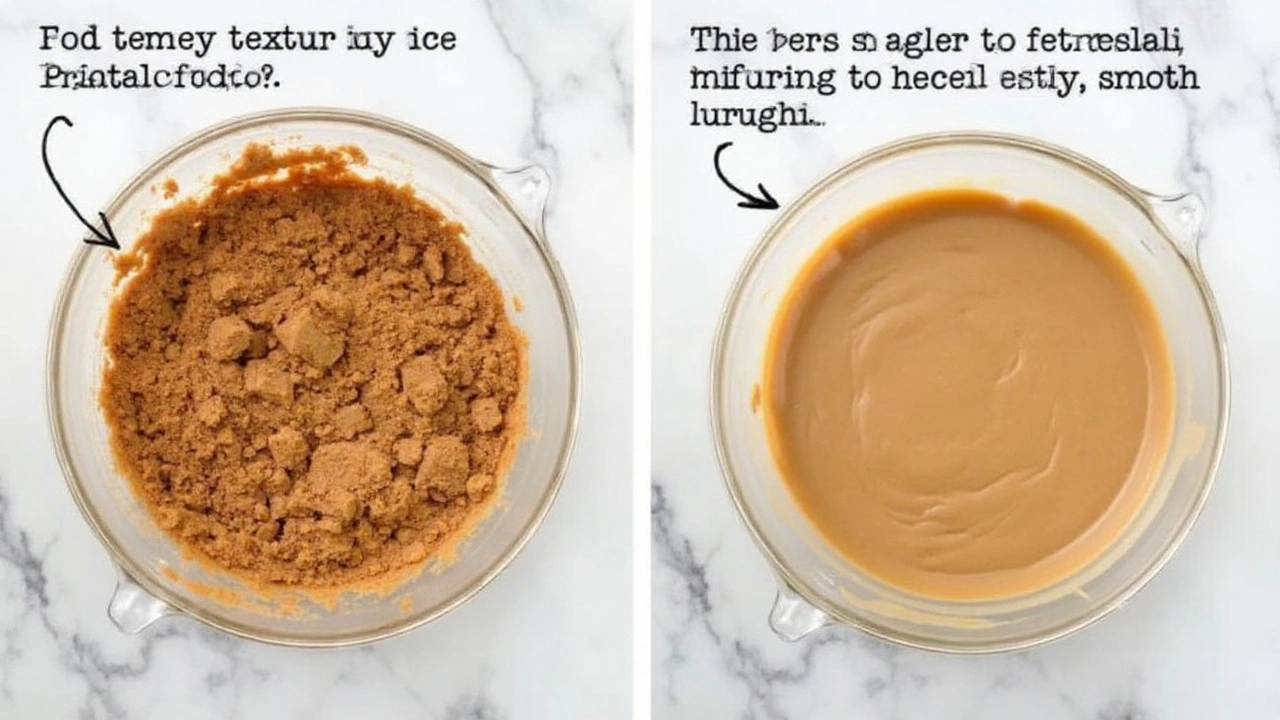
Rescuing a Stirred-Too-Early Fudge
Making homemade fudge is more an art than a science, where timing and precision play cornerstones. Stirring the mixture prematurely is like opening the oven door too soon when baking a soufflé—a classic mistake that can lead to unintended results. But unlike a deflated dessert, prematurely stirred fudge is not doomed. There's resilience in the sugary layers that can be harnessed with a few expert tricks to reverse some of the damage caused too early in the process. Don't fret if you jumped the gun; your grainy fudge need not end up as topsy-turvy isles in a sea of sugar.
To remedy the situation, it’s vital first to understand what happens to sugar crystals when the mixture is stirred too early. When fudge is boiling, sugar is dissolved, creating a smooth solution. Too early stirring prompts these sugars to form crystals, lacking the stable background they need. The result? What should be creamy bliss turns into a sandstorm of crunchy particles. The good news is, you can dissolve most of these errant crystals by reheating slightly. Return your fudge to a medium-low heat. As it begins to melt again, the smoothed warmth helps undo the crystallization, promising a second chance at a perfect texture.
If you find yourself with crystallized fudge, David Lebovitz, renowned pastry chef, suggests, "Add a few drops of liquid, like cream, as you reheat, which creates a fresh, creamy matrix to dissolve the crystals."
Beyond the reheating approach, ensure your recipe techniques are also conducive to smooth fudge. Many expert candy makers recommend incorporating an additional method to protect the reputation of your confectionery creation. Beat the reheated fudge as it cools—this more vigorous approach assists in bringing about the coveted creamy feel. While this may appear old-fashioned, the method stands the time test, ever-ready to rescue amateur confections from gritty oblivion. The additional concentration on stirring carefully, only when indicated by temperature or timing, ensures your final attempt mirrors the smooth, delectable squares you envision.
An accompanying trick for preventing further crystallization, even after some has commenced, is to fold in small nut pieces. These work much like cashmere against the skin—an underlay supporting the delicate flow of the fudge matrix. The nuts disperse, lessening the chance of setting rapid on you yet again. With patience and finesse, these steps will guide a return from grainy sugars to sweet, luscious delight—transforming your kitchen into candy nirvana no matter how disheartening the initial blunder may have been.
Expert Tips for Perfect Fudge
Creating perfect homemade fudge is both an art and a science, and mastering it can elevate your candy-making skills to a new level. The secret lies in understanding the chemistry behind the ingredients and following tried-and-true methods that ensure consistently smooth and creamy results. Many beginners are tempted to stir their mixture too early—often a result of impatience or misunderstanding—leading to a grainy texture. Here, we'll explore essential fudge recipes techniques that promise success and the satisfaction of achieving the perfect bite.
First, mastering the correct temperature is crucial. Fudge should reach the 'soft-ball' stage, approximately 234°F to 240°F (112°C to 115°C). This is critical to achieve a creamy consistency rather than a hard, brittle one. A candy thermometer is an indispensable tool to ensure accuracy in this regard. Whether you're a beginner or seasoned confectioner, relying solely on instinct rather than precise measurements can lead to mistakes. Jami Curl, founder of Quin candy, once said,
"Candy making isn’t guesswork. It's about being precise and understanding the science."Keeping her words in mind reminds us how precision underpins this delightful sweet.
After reaching the desired temperature, the cooling phase is just as crucial. During this time, typically 30 to 40 minutes, do not disturb the mixture. Allow it to sit undisturbed until it cools to about 110°F (43°C). This step is imperative because premature stirring can disturb the sugar solution and cause crystallization, which is the common culprit behind grainy fudge. Using a wooden spoon, start stirring once cooled sufficiently, continuing until the mixture loses its sheen and begins to thicken—a task that requires patience but rewards with divine homemade fudge.
Maintaining a consistent stovetop temperature is another key to success. Whether using a gas or electric stove, fluctuations can lead to uneven cooking, affecting the fudge’s final texture. Keep the heat steady and low to medium, and remember that attention to detail is critical. Always cook your candy uncovered to prevent unwanted moisture from condensing into the mixture. Keep these details in mind to conquer the potential pitfalls of fudge making.
One more helpful tip is incorporating ingredients that help prevent crystallization. For instance, adding a small amount of corn syrup or cream of tartar helps inhibit the formation of sugar crystals. These ingredients create a smoother texture by interfering with the crystallization process. A small addition, like a tablespoon of corn syrup, can make a significant difference in your fudge's final quality, ensuring a silky, luscious result.
Lastly, flavorings can be a delightful way to elevate your fudge. While chocolate is the traditional choice, experimenting with vanilla, maple, or even a hint of sea salt can transform a simple fudge recipe into something extraordinary. Personalize your approach by selecting high-quality extracts or infusions that reflect your tastes or the occasion, making each batch not only a treat but a culinary highlight.



